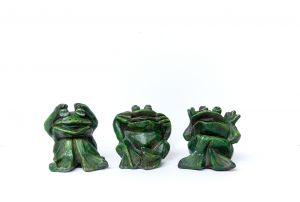
Rupert Murdoch and the Seeds of Moral Hazard
Journalists are not supposed to act illegally
The News Corporation/News of the World scandal has been described as a case study in bad management. What was there about the company's organizational culture that led to "Murdoch's Mess"? Professor Michel Anteby, who studies how meaning is built at work and how moral orders are sustained, provides an answer. He is the author of, among other publications, Moral Gray Zones, published by the Princeton University Press in 2008.
Many companies today operate like Russian nesting dolls, where one large figure is actually made up of many smaller ones. These organizations present a unified face to the outside world, but rely heavily on other, usually smaller, companies or external individuals to conduct many of their activities.
What part of your iPad is made by Apple? Is the Verizon customer representative you're talking with really part of that company? How many parts of the Airbus or Boeing plane you're flying on are actually built by these firms? Many would argue that answers to these questions are irrelevant. As long as services are performed and products manufactured, they say, such organizational configurations are beneficial. They allow companies to remain lean and react to shifting demands. Yet the associated moral hazard often goes unnoticed. Such a risk can prove even greater when the various elements of the "delegation chain" obey different standards.
What does this have to do with the ongoing Rupert Murdoch case? Journalists at News of the World apparently hired people outside the company to illegally hack into the phones of select individuals. That these hackers seem not to be News of the World employees illustrates the Russian nesting doll model, which contains the seeds of moral hazard, since it allows for the plausibility of denial. While we readily recognize such a hazard in the food and apparel industries and the need to "secure" all elements of their production chain, most other industries have yet to recognize such a hazard.
In the media business, news items require fair and secure sourcing, despite the fact that a freelancer—or small doll—may be crafting the story. But at the News of the World, the people who were asked to hack the phones were apparently hired by journalists, but were not journalists themselves. This gave them the freedom to obey norms different from those of their employers. Needless to say, journalists are not supposed to act illegally. The 1993 Council of Europe's Resolution 1003 on the ethics of journalism clearly states that "In the journalist's profession the end does not justify the means; therefore information must be obtained by legal and ethical means." The hired hands at News of the World, however, did not have to respect this code of ethics.
When media groups employ external private investigators, health-maintenance organizations hire outside medical doctors, and governments occasionally rely on private mercenaries, people can plausibly deny knowledge of illegal activities. In addition, each professional group's distinct standards can create a false impression that all is well. Yet the Murdoch case teaches us that nesting dolls require our full attention. Although these configurations may seem nimble, they can also be highly problematic. Because professional groups are working separately for a common cause does not mean that the production line is secure. In fact, the nesting dolls model may be the best way to go wrong while seemingly doing the right thing.
This article was provided with permission from Harvard Business School Working Knowledge.





